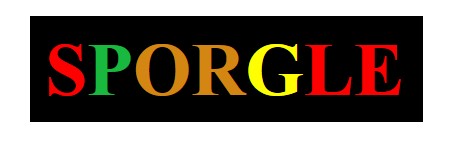
Syllabication vs. Hyphenation vs. Chunking
Cutting Syllables into Chunks
Interactive Tool Overview
5
Finger Syllables and

Syllabication vs. Hyphenation vs. Chunking
Cutting Syllables into Chunks
Interactive Tool Overview
![]()
| Topic | Discussion |
|
|
| Purpose |
Purpose: The purpose of this tool is to
provide students with a consistent method for
attacking
unknown
multisyllabic words. The tool will develop a model for
consistent attack skills and provide interactive practice activities
based on an 8,000+ word database. Statement of the Problem: As illustrated in both the Problem Analysis document and video, decoding unknown multisyllabic words is complicated by consonant-vowel patterns, accent or stressed syllables, the schwa vowel and pronunciation keys that do not match syllablication patterns. Solution: Create a 5 finger visual mnemonic and vowel sound sequence to create a consistent method for attacking unknown multisyllabic words. The 5 Finger mnemonic is described in detail in the Topic Section - 5 Finger Chunking Rules. Permission is granted to copy/print the The 5 Finger Syllables/Vowel Sound Sequence study aid. The vowel sound sequence should always be: TRY - short - schwa - long - dipththong. If a "r" follows the vowel, try the Bossy R vowel sound. |
Problem Analysis Five Finger Syllables and Vowel Sound Sequence Vowel Sound Sequence |
|
| Definitions | Hyphenation:
Hyphenation rules are used to break a longer word into sections.
The rules are generally applied to splitting longer words at the end of
a line while writing. With the advent of word processors, this skill is becoming
a lost art. Dictionaries are the primary source of hyphenation
rules. Syllabication: Syllabication rules are generally used to help us pronounce words. In most cases, dictionary syllable representation matches hyphenation representation. Most educational literature describes six syllable types. Some advocate seven types. A quick Google of "six syllable types" provides an extensive source of descriptions of the rules. A sample link is provided. Pronunciation Keys: Most online dictionaries provide two types of pronunciation keys. The first and most generally used is a spelling pattern with associated keys. The second, used by many Speech and Language Pathologist, is IPA - International Phonetic Alphabet Pronunciation Key. This tool uses the IPA format in analysis of words. Schwa - ǝ: Every vowel letter (a-e-i-o-u) can make the schwa sound, which is a weak short u sound, in an unaccented syllable. |
How to Teach and Learn Syllabication. Google Six Syllable Types Example: cat spelling key [kat] IPA key /kæt/ |
|
|
5
Finger Chunking Rules How Many Consonants Between Vowels? |
 |
vcv
pattern: One
consonant between two
vowels. Chunking pattern: v-cv Even though the vcv pattern looks simple, it has the most variance in determining the vowel sound in the leading syllable. As indicated in the provided link, Rule #3 illustrates the "open" syllable type (ti-ger) with the first syllable's vowel having a long sound 55% of the time. Rule #4 illustrates the "closed" syllable type (cab-in) with the first syllable's vowel having a short sound 45% of the time. In analyzing this tool's database of 2,300 two syllable words, 623 or 27% have a vcv pattern, the same pattern of the first syllable's vowel sound, 55% long and 45% short, is strongly supported. However, detailed analysis illustrates that the first syllable's vowel sound is long 47%, short 32%, schwa 6% and diphthong 11%. Additional analysis of 1695 three syllable words, approximately 43% have a vcv pattern creating the first syllable and approximately 45% have a vcv pattern creating the second syllable. Further analysis of the 1695 words illustrates that the vowel sound pattern has a significant shift, even between syllables. Vowel Sound 1st Syllable 2nd Syllable short 61% 29% schwa 11% 40% long 12% 11% diphthong 6% 3% Bossy R 10% 17% One Finger Rule and Process: When you see one consonant between two vowels (vcv), always cut in front of the consonant. For the leading syllable's vowel sound, try the vowel sound in this order: short - schwa - long - diphthong. Try each sound until the word makes sense to your listening and/or speaking vocabulary. Note: The Bossy R sound is addressed later. |
How to Teach and Learn Syllabication. |
 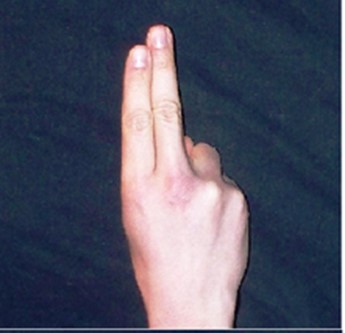 |
vccv
pattern: Two
consonants between two vowels. Chunking pattern: vc-cv Using the two finger mnemonic, the student can quickly see that you can either cut the two fingers in half or not at all. In analyzing the the 2,300 two syllable words, 852 or 37% have the cvvc pattern. Of the 852 words, 758 or 89% can be cut in half. Vowel sound patterns: short - 74% schwa - 13% long - 4% diphthong - 9%. 11% of the vccv pattern words should not be cut in half because the two consonants form a blend (br, cl, tr ck) or digraph (ch sh th). Rule: cut in front of the two consonants, except for ck. Vowel sound patterns: short - 45% schwa - 21% long - 28% diphthong - 6%. |
||
 |
vcccv
pattern: Three
consonants between two vowels. In most cases, it
creates one two letter blend or digraph pattern. The grouping of
consonants rarely creates a
three letter blend or digraph (str or tch). Of the 2,300 two syllable words, 646 or 36% have the vcccv pattern. 70% the 646 words are compound words. Chunking patterns: Most frequent: vc-ccv vcc-cv Less Frequent vccc-v v-cccv Vowel sound patterns: short - 57% schwa - 2% long - 14% diphthong - 19% Bossy R - 8%. |
||
 |
vccccv pattern:
Four consonants between two vowels.
Creates one or two blends or digraphs. Of the 2,300 two syllable words, 155 or 9% have the vccccv pattern. 70% the 646 words are compound words. Chunking pattern : vcc-ccv vccc-cv vc-cccv Vowel sound patterns: short - 45% schwa - 1% long - 16% diphthong - 21% Bossy R - 17%. |
||
 |
vcccccv pattern: Five
consonants between two vowels. Creates two blends
and/or digraphs. Of the 2,300 two syllable words, 21 or 1% have the vcccccv pattern. 99% the 21 words are compound words. Chunking patterns: vcc-cccv vccc-ccv |
||
|
S P OR G LE |
SPORGLE Strategy for Chunking Unknow Words S = Suffix P = Prefix OR = Orange G = Grapefruit LE = Maple Syrup |
||
| Suffix | Recognize
common suffixes and cut in front of the suffix. The interactive activity includes 445 words with suffixes. |
Suffixes tion sion ance ence |
|
| Prefix | Recognize
common prefixes and cut behind the prefix. The interactive activity includes 534 words with prefixes. |
Prefixes de dis ex il im in ir re un |
|
 |
Orange
pattern: Find an "r"
in the middle of a word. Cut behind the "r".
95% of the vr pattern have a "bossy R" vowel sound. The interactive activity includes 259 "orange" words. |
Examples door-way sher-bert fur-nish air-port pur-pose for-five |
|
 |
Grapefruit pattern:
Find an "e" in the middle of a word. Cut behind
the "e". 95% of words are compound words or a base word with a suffix. The interactive activity includes 327 "grapefruit" words. |
Examples grape-fruit love-ly a-muse-ment fore-head note-book mile-age |
|
 |
Maple
Syrup pattern: Since maple syrup is so sticky, if you
see an "le" at the end of a word,
the consonant next to the "le" sticks to the "le",
except for "ck". Note that many of the chunking rules discussed above could be the primary rule for "le" words. The interactive activity includes 161 "maple syrup" words. |
Examples an-gle pick-le tan-gle cou-ple bee-tle trou-ble gog-gle peb-ble de-sir-a-ble bu-gle mis-sle waf-fle |
|
|
Additional Activities 3 - 5 Syllable Words Use All Chunking Rules |
 The interactive activity includes 522 compound words with 3 - 4 syllables. |
Examples pot-hol-der sky-scra-per shoe-ma-ker straw-ber-ry fresh-wa-ter for-e-ver ta-ble-cloth but-ter-milk |
|
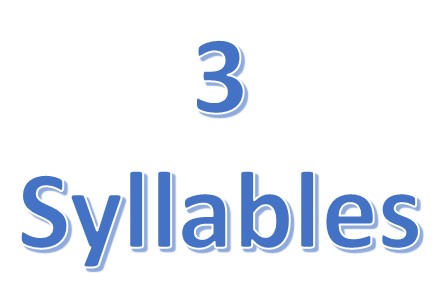 The interactive activity includes 1695 words with 3 syllables.
The interactive activity includes 1695 words with 3 syllables. |
Use All Chunking Rules |
||
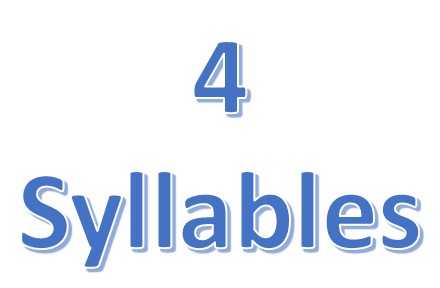 The interactive activity includes 703 words with 4 syllables.
The interactive activity includes 703 words with 4 syllables. |
|||
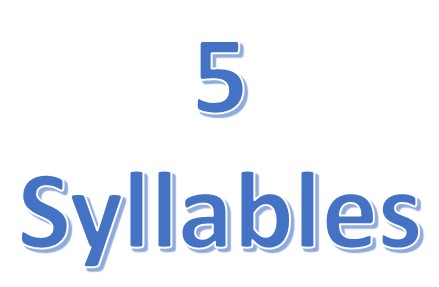 The interactive activity includes 166 words with 5 syllables.
The interactive activity includes 166 words with 5 syllables. |
|||
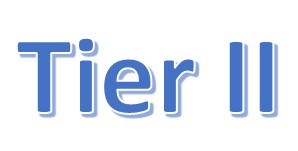 The interactive activity includes 771 Tier II words.
The interactive activity includes 771 Tier II words. |
|||
| Text to Speech |
The use of Text to Speech tools could be very
beneficial to students using 5 Finger Syllables. When the student is
not sure of the word in focus, they can highlight the word and copy it
to the clipboard, allowing the Text to Speech tool to read the
information. You will need to research which Text to Speech tool best works with your computer device and/or operating system. When researching tools, some are free or minimal cost. Look for a tool that monitors the clipboard. This function will automatically read any text information copied to the clipboard. Other tools require that you paste the text into their tool and then press play. Windows based tool - XP - 8. Works with IE and Chrome. TTS Reader Does not run on Windows Surface nor in Windows 10. Window 10 TTS Download. Shop iStore, Play Store and Windows Store for text to speech tools for tablets and phones. |
||